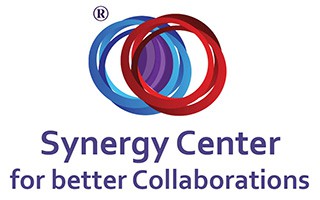Culture has a powerful influence on interactions within and between organizations. Your perception of one’s culture isn’t always true or correct. To ensure that you’ve a correct perception you must make a genuine and sincere effort to understand another culture and to develop tolerance toward it. This effort would help you to reduce the formality or formalness of interactions; hence, flex boundaries, and making it easy to create synergy. This is all about diversity management – or its acknowledgment.
Tolerance and respectfulness toward another culture go hand in hand in helping you to cope with diversity in your organization. To develop these virtues, you must make an effort to understand the culture through learning about its origins, perspectives and characteristics. This isn’t to say that you must agree or disagree with the viewpoints or worldviews of another culture.
It’s incorrect to assume that your demonstration of respect toward a different culture amounts to agreeing with it. This is one of the main reasons why people develop intolerance toward another culture, simply because they can’t communicate with people whom they disagree with. And this behavior negatively impacts the quality of interactions in organizations. However, it’s possible to reach a common ground even if you don’t agree with the other person. The following case clearly demonstrates this point.
A Case of Jewish-Arab Coexistence in Haifa University
In the university’s School of Political Science, two culturally different groups of students – Jews and Arabs – struggled to coexist. In synergy terms, the two cultures struggled to acknowledge and respect each other’s diversity. Dr. Rami Ben-Yshai facilitated a process to promote synergy and improved interactions between the two groups.
However, he faced one big challenge. The Arab students perceived him as a Jewish Israeli. Inasmuch as he tried to come out as neutral, the students couldn’t understand, respect and acknowledge this stance. And the process took longer than usual, because of obstacles such as cultural perceptions. It was difficult to convince them to agree to accept each other, despite their cultural differences.
Dr. Ben-Yshai came up with the following measures:
- First off, he welcomed an Arab facilitator to cooperate on the project. The cooperation between the two culturally different facilitators set an example and a stage for understanding that it was possible to coexist without the need for an agreement. This went a long way in cultivating a spirit of synergy between the two groups of students. In the eyes of the students, Dr. Ben-Yshai and his co-facilitator were their role models. They implemented synergy, despite scarcity of resources and opportunities to teach the synergy process.
- Second, the group facilitators renewed their agreement, despite apparent disagreement on the constitution of the agreement. What they succeeded to create, though, was a “bubble” within which coexistence was possible. The “bubble” was a microcosm of a reality occurring outside of it – Jewish-Arab disagreements and conflicts.
Synergy Doesn’t Require Agreement or Chemistry
It’s a matter of “agreeing to disagree”; not a matter of developing interpersonal chemistry first. And “agreeing to disagree” entails creating mutual respect, tolerance and understanding toward one another – not agreement. It’s a process, which requires both groups to focus their energy on what’s going to benefit both of them – a shared purpose. In the case of the students, the shared strategic purpose was to complete the project and inculcate better familiarization between the two cultures.
In the end, the students figured out how to flex their boundaries successfully. The “recalibration” of boundaries was evident in their actions. The students organized get-togethers in their respective homes, shared meals, held informal conversations, and, most importantly, learned how to view the other as a human. Consequently, the quality of interactions between them improved significantly.
As a Brief Recap…
What’s necessary to create a microcosm of reality – your shared reality or “bubble” – is understanding, tolerance and respect. It’s important to note that what’s happening within the “bubble” doesn’t necessarily occur in reality, but it’s an important, big step toward increasing the familiarization between cultures.





mobile slot apps
21 Nov 2018Great web site you’ve got here.. It’s hard to find high quality writing like yours nowadays.
I seriously appreciate people like you! Take care!! https://Tim-allen.us/__media__/js/netsoltrademark.php?d=918.network%2Fdownloads%2F81-joker123
rami
21 Nov 2018Thank you dear Tim. Could you let me in what ways I’ve helped you? Any questions?
live 22
12 Feb 2019Definitely believe that which you said. Your
favorite justification seemed to be on the net the easiest thing to be aware of.
I say to you, I certainly get annoyed while people consider worries that they plainly do not know about.
You managed to hit the nail upon the top and defined out the whole thing without having side
effect , people could take a signal. Will likely be back to get
more. Thanks https://918.network/downloads/85-download-live22
best progressive mobile games
26 Feb 2019I absolutely love your blog and find almost all of your
post’s to be exactly I’m looking for. can you offer guest writers to write
content for you? I wouldn’t mind writing a post or elaborating
on a number of the subjects you write in relation to here.
Again, awesome website!
rami
3 Mar 2019Thanks for your feedback. Please do send specific articles, comments or questions It will enrich us and the readers